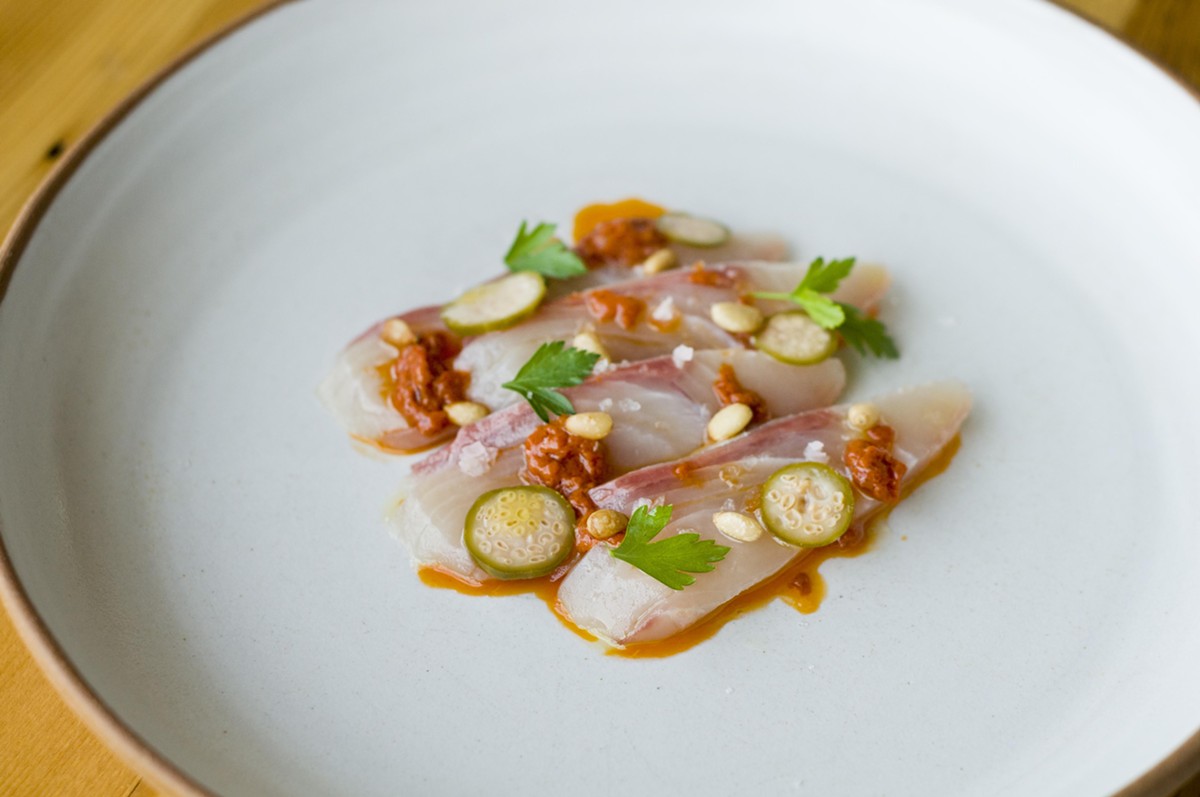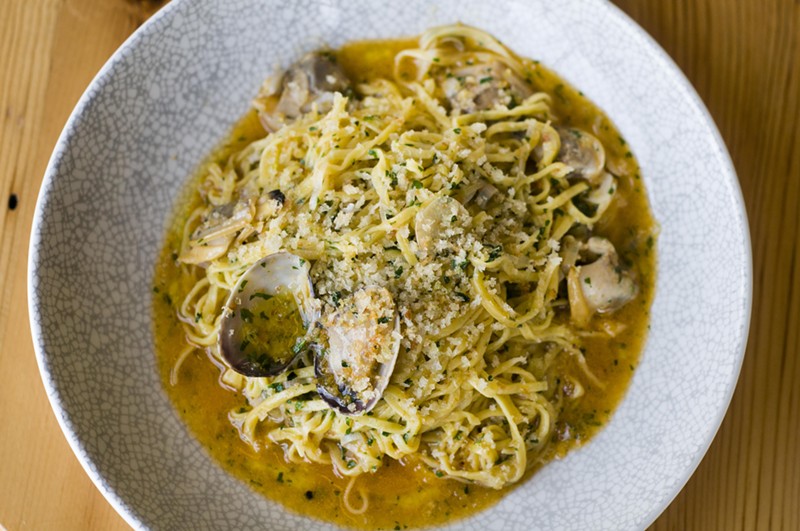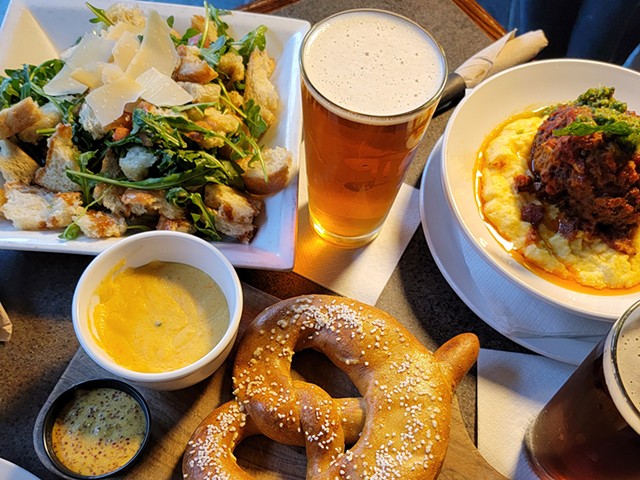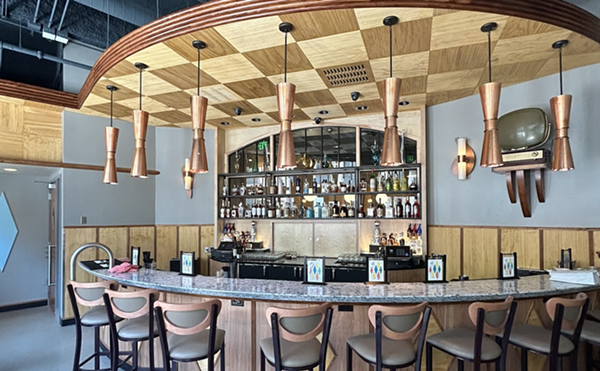It's hard to overstate how difficult of a position restaurants like Oak and Reel faced during the thick of the pandemic. Carryout works just fine for a spot like a deli or pizzeria, which trade in products that largely withstand degradation in quality as they make the journey from kitchen to carryout window to cashier to car to home to plate. But for dishes of a higher culinary echelon, that 25 minutes can often come with a bigger cost.
Knowing that this was the case, I still ordered carryout from Oak and Reel — and several other higher-end restaurants — during the pandemic's pre-vaccine and limited seating days. They needed support, and, beyond that, Detroit's dearth of worthwhile seafood motivated me — Michelin-starred chef Jared Gadbaw's Italian seafood restaurant opened in Milwaukee Junction in September, and it was hard to wait for this one.
Gadbaw said he couldn't pivot to fast casual in any meaningful way during the pandemic and was more interested in building his upscale seafood brand than offering something outside of the original vision. So he forged on, and that's laudable, but while that first visit left an impression, the second in May confirmed that sensitive dishes like raw hamachi adorned with caper berries, calabrian pepper oil, and pine nut taste even better when served in the proper setting.
My dining partner and I each ordered a four-course meal (more on the menu and ordering structure in a minute). In Gadbaw's hamachi — sourced from the excellent Motor City Seafood distributor — the caper berries and calabrian pepper oil atop the strips of smooth fish deliver pops of acid and heat, while pine nuts round out the pleasing texture and profile. The snapper is thinner, longer, and a bit more delicate than the hamachi, lightly cured in a salt, sugar, and citrus mix with fennel pollen, an olivada that makes its presence known just to the right level, and pistachio.
Among the entrees are scallops, which offer big buttery U-10 pucks that are browned around the edges and served atop a green garlic puree, English peas, anchovy butter, and mint and romaine. In the Alaskan halibut, a slab of lightly roasted fish sits atop a bed of fregola sarda, a pasta that could be mistaken for Israeli couscous. That's mixed with spigarello, a leafy Italian broccoli, as well as olives and tomato, and the package is crowned with pickled green almonds.
I tend to shy away from clams because those that Detroit restaurants serve are often gummy and insubstantial, but expected better here and was rewarded with plump, flavorful bivalves entangled in long, thin ribbons of bouncy tagliolini noodles with fragrant leeks, all of which is drenched in a garlic chili oil. But what makes the dish is the bursts of flavor from nduja, a fiery, slightly smoky salami pâté made with pork and calabrian peppers. It's an altogether gritty dish in flavor. However, the paccheri was the superior of our two pasta plates, with big, chewy tube noodles that function as a fine vessel for tuna bolognese, mascarpone, and guanciale. It's a busy-but-harmonious dish, slightly less intense than the tagliolini.
For dessert, we ordered an Italian strawberry-and-rhubarb frangipane, essentially an Italian tart with a butter crust and macerated rhubarb and strawberry that's served underneath a scoop of vanilla gelato. The gianduja is a Italian sweet chocolate hazelnut spread that's the origin of Nutella, and here it comes encased in dark chocolate ganache with a whipped mascarpone, candied hazelnut, cocoa nubs, and brightening kumquat puree. The cocktail list includes Italian classics like the aperol spritz, as well as originals, and there's an extensive list of wines.
The menu changes seasonally, and the rules around it need an explanation. It's divided into four sections — primi (small plates), pasta, entrees, and desserts. Choose from three- ($58), four- ($68), or five- ($78) course meals. Plates can be shared, but courses cannot be split. For example, a party of two can't order a five-course and split it, but each could order a three-course meal and share. Also, each option must include one entree and one dessert, and the remaining courses can be mixed and matched among primi and pasta.
All told, there are few gripes to list. More than two seafood options among the entrees would be preferable, but Gadbaw says he's working on expanding the menu. Service was solid, and we appreciated an employee who grabbed a shim when she noticed a slight wobble in our table. Oak and Reel is divided into two huge, open sections — a bar area and a proper dining room in back, though the modern, slightly industrial vibe in either isn't far apart.
Currently, there's no outdoor seating, though that could change. Tables are spaced 8 to 10 feet apart, and there's plenty of parking in a fenced lot. After months of treading water, Gadbaw says the restaurant makes weekly progress as more guests venture out, and it's a relief to see Oak and Reel — and Detroit's other similarly situated eateries — finally get to do their thing in the proper fashion.
Stay connected with Detroit Metro Times. Subscribe to our newsletters, and follow us on Google News, Apple News, Twitter, Facebook, Instagram, or Reddit.








